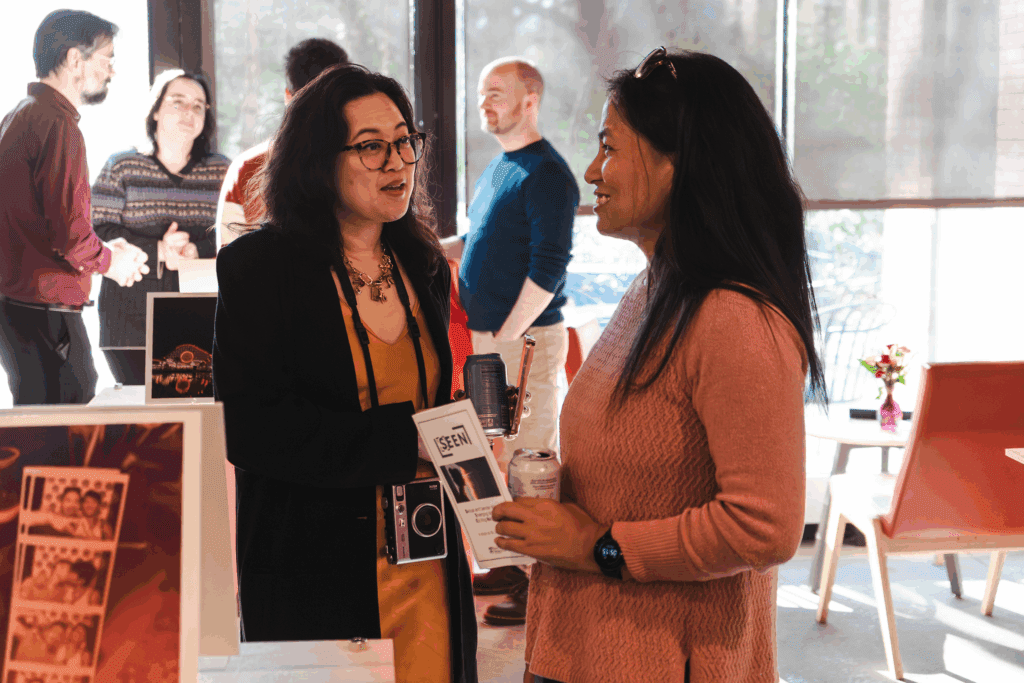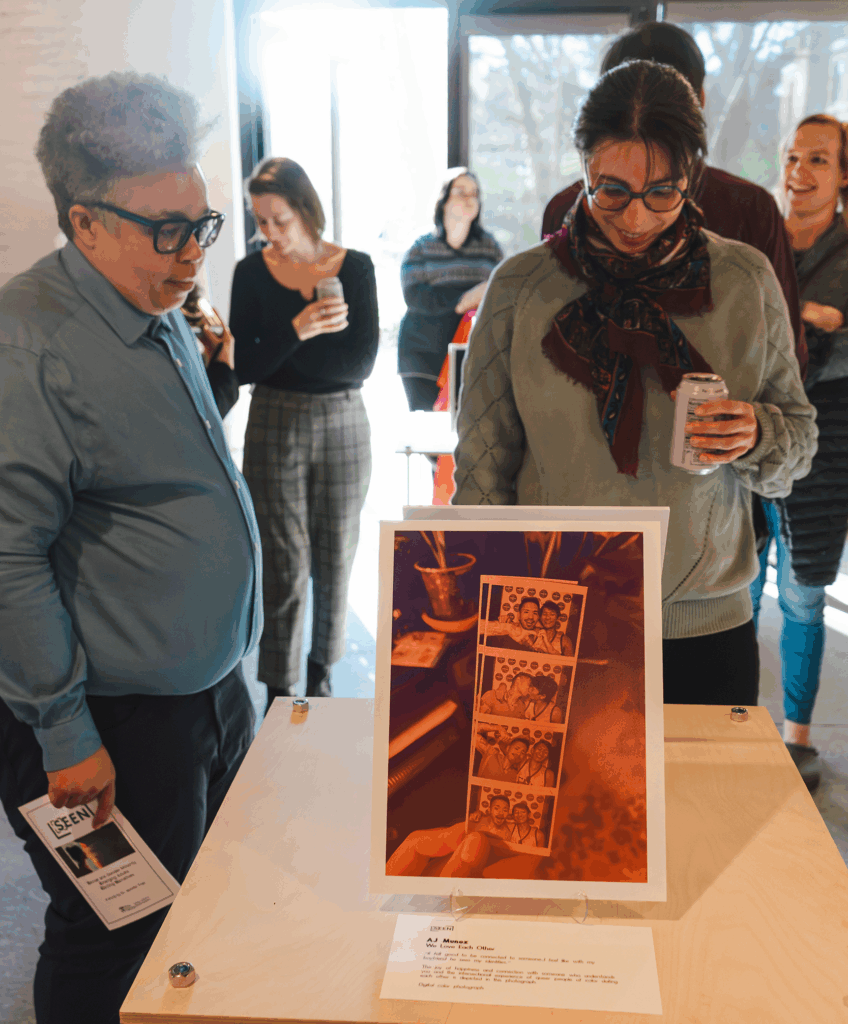For LGBTQ+ youth of color, being unseen, erased, or misunderstood can have lasting consequences on their mental health. But what happens when they get to tell their story on their own terms, through their own lens?
That question lies at the heart of SEEN, a recent research study led by Dr. Jennifer Tran, a postdoctoral fellow with the Eidos LGBTQ+ Health Initiative at University of Pennsylvania. The study’s findings, recently published in the Journal of Gay & Lesbian Mental Health, explore how creative narrative interventions can support the mental health of LGBTQ+ emerging adults of color. What she found was both moving and measurable.

Creativity as a Tool for Healing
The connection between creativity and mental health is well-established. Art therapy is a widely used, evidence-backed intervention, and the act of self-expression has long been known to reduce distress and support healing.
Creativity is also embedded in LGBTQ+ history and culture, acting as a survival strategy in a community that, by necessity, has had to think outside the box. For queer and trans people, especially youth, art can be a life-affirming tool for expression, reflection, and visibility. From drag and zines to poetry and photography, art gives voice to those with identities often silenced by systemic discrimination.
Despite the community’s resilience, research shows that LGBTQ+ youth continue to experience staggering mental health disparities compared to their cisgender, heterosexual peers, with higher rates of depression, anxiety, and suicidality. This is largely a result of facing heightened stigma, discrimination, rejection, and isolation. These inequities are especially severe for queer and trans youth of color, who navigate intersectional stigma and limited culturally tailored support. Dr. Tran wanted to know: could a creative intervention help?
The SEEN Study
Launched in 2023 as part of her postdoctoral fellowship, Dr. Tran’s study, SEEN (Sexual and gender minority Emerging adults Eliciting Narratives) invited 19 LGBTQ+ emerging adults (ages 18-24) of color from across the United States to engage in a deeply personal creative exercise.
Participants were asked to respond to two questions using photo or video:
- Tell me about a time when you felt SEEN as an LGBTQ+ person of color.
- Tell me about a time when you felt UNSEEN as an LGBTQ+ person of color.
Their responses were powerful, vulnerable, and visually stunning, reflecting everything from resilience and joy to pain and invisibility.
The Outcome: Creative Storytelling Works
Before and after participants created their photo or video pieces, they completed assessments measuring mental health outcomes. The results were striking:
- Anxiety and depression decreased
- Psychological well-being increased
These findings suggest that engaging in narrative-based creative expression can have tangible benefits on mental health for LGBTQ+ youth of color.
One participant reflected:
“I think it’s a really meaningful way to reflect on your positionality, to reflect on the spaces that you are a part of and the ways that you feel… I think it’s very rewarding.”
Learn more about the methods and findings from the study here.

From Research to Public Art
After the study concluded, Dr. Tran asked participants whether they’d be willing to share their work publicly. Many were enthusiastic, excited by the idea that their stories could be witnessed by others, and that their visibility might make someone else feel less alone.
In April 2025, Eidos and Dr. Tran hosted a gallery opening at Penn’s LGBT Center showcasing a selection of the participants’ photo and video works. The event was a celebration of story, survival, and the power of being seen. One participant even created a new video reflecting on the importance of the experience and how validating it was to share their truth. Watch the video here.
For Dr. Tran, the project was more than academic: it was personal.
“Growing up as someone struggling with their own queer identity as a Vietnamese-American in Texas, being able to bring this study to life has been healing. For me, SEEN highlights the power of art in impacting mental health, influencing social change, and inspiring community connection. I truly believe that LGBTQ+ mental, physical, and behavioral health perseveres, and art, creativity, and community are the tools we can use to thrive.”
The stories created through SEEN are now available online for broader audiences. You can view selected works from the participants’ and learn more about the study at Seenstudy.org.
If you’re interested in the full research findings, Dr. Tran’s peer-reviewed paper can be accessed here.